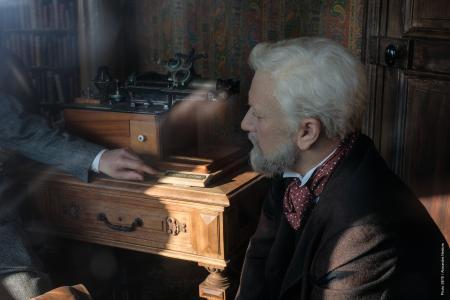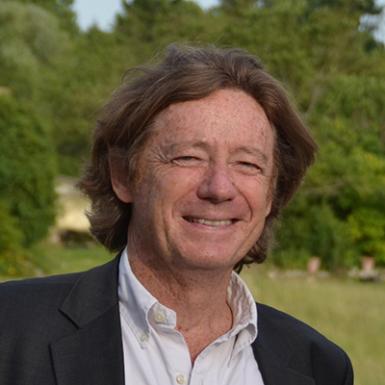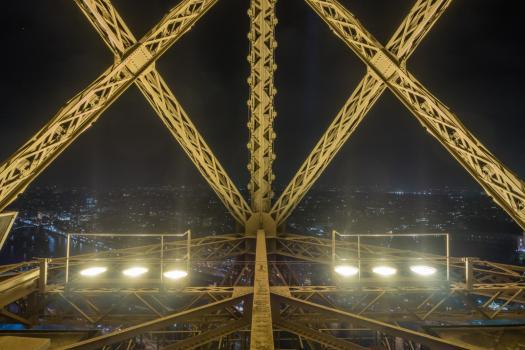Gustave Eiffel's name became famous when the Tower rose high up into the Paris sky. But he had already made a solid reputation for himself in the world of steel construction, both as an engineer and as a contractor. He was born in 1832 in Burgundy where his mother ran a coal trading business. His family, originally from the Rhineland, bears a German surname: Boenickhausen. In time the family took the name Eiffel, in memory of the range of hills originating from this region, a change that was only officially formalized in 1879.
Early leadership skills
With a gift for science, Gustave joined a prestigious engineering school, the École Centrale des Arts et Manufactures. After three years of studies, where he proved himself to be a rather carefree, energetic and undisciplined student, he left in 1855, the year of the first Universal Exposition in France. He was destined for a career in the chemical industry since his uncle owned a paint factory. But a family dispute kept him away from this path and he found a job with a construction engineer, Charles Nepveu, where he quickly took on responsibilities. After a stint with a railway company, at the age of 26 he took over the management of the construction site of one of the largest engineering structures of the time, the Bordeaux railway bridge over the Garonne River. Here, he revealed his talents as an organizer and leader of men, even saving a worker from drowning.

A full career even before the Tower
After some work in the southwest, he decided to set up on his own and founded his own company at the age of 32, first as a consulting engineer and then as a full-fledged builder, specializing in metal construction at a time when the railways were booming. His first major success came in 1867 with the construction of two viaducts on the Sioule River in central France. After the war of 1870, he sought to move his operations to Peru and Chile, with the support of a partner, but quickly gave up. Then came two major commissions in 1875, one for the Western Railway Station in Budapest, Hungary, and the other for the Maria Pia Viaduct in Porto, Portugal designed by his new partner, the engineer Théophile Seyrig. This was followed by a long list of successful steel constructions, bridges and structures, mainly in France but also in Portugal, Spain and Romania. Eiffel proved as skillful a negotiator as he was a business executive, probably more so than an expert engineer – even if he introduced a certain number of innovations to the principles of structural assembly or to inventive constructions, such as the reinforcement of the Statue of Liberty in New York, the mobile dome of the Nice Observatory or the small bridges sold in kits.
At 51, the adventure of the 1,000-foot tower began
In 1884, at the age of 51, Eiffel led his company to 4th or 5th place among French companies in the field. It was at this time that his two main engineers, Émile Nouguier and Maurice Koechlin, who had replaced Seyrig as head of research, proposed the idea of a 1,000-foot (300-meter) tower. Eiffel's great merit would be to have given substance to this a priori utopian idea. After the success of the Tower, Eiffel would be drawn into the scandal of the Panama Canal, for which he began building ten giant locks. This painful episode meant the end of his contracting career for him but the beginning of a new adventure. He then invested part of his comfortable fortune and most of his time and energy in various scientific research, initially intended to demonstrate the Tower's usefulness. Here he proved himself to be a true scientist – one of the pioneers of meteorology, aerodynamics and radiotelegraphy. He died at the age of 93, surrounded by many children and grandchildren, a figure who had already become world famous thanks to the Tower that bears his name.
Who was Gustave Eiffel?
While he didn’t actually invent his famous Tower, Gustave Eiffel developed and led the amazing project to build this 1,000-foot tall metal tower for the World Exhibition in 1889. Born on December 15, 1832 in Burgundy, Gustave Eiffel’s real surname was Bönickhausen! His family came from the Rhineland and changed their name when they moved to France. Gustave Eiffel was a brilliant engineer who graduated from the prestigious Parisian engineering school École Centrale des Arts et Manufactures.
He was also a bold entrepreneur: when he was just 32 years old he set up his own company with workshops in Levallois-Perret. He built hundreds of metal structures of all kinds all over the world: Budapest’s Nyugati (“western”) train station in Hungary, Maria Pia Bridge in Porto, Portugal, and the Garabit viaduct in France.
This successful businessman knew how to export his company’s expertise, not only throughout Europe but as far as Vietnam, where he sold metal bridges in kit form. He also built the metal frame of Bartholdi’s Statue of Liberty.
He married at age 30, had five children with Marguerite Gaudelet, who died at a young age in 1877. He never remarried. His eldest daughter Claire played an important role in the company, as both his confidante and personal secretary.
He was 51 years old when the Eiffel Tower project began in 1884. As his brand new Tower radiated across Paris, Gustave Eiffel got caught up in the disastrous Panama Canal project, for which he was to build the locks. This was a distressing time for Gustave, bringing an end to his career but sparking a new adventure!
Eiffel devoted the last 30 years of his life to a productive career as a scientist. He began by finding a use for the Tower, which had originally been built for a 20-year lifespan. He carried out many experiments on wind resistance, meteorology, and particularly radio wave transmission. Gustave Eiffel died on December 27, 1923 at the age of 91.
Bertrand Lemoine is an architect, engineer and historian. He was a research director at the CNRS and general manager of the Atelier International du Grand Paris. He is an internationally recognized specialist in the history and current events of architecture, construction, the city and heritage in the 19th and 20th centuries, particularly in Paris, Greater Paris and the Eiffel Tower. He is the author of forty-three books and several hundred articles on these subjects. He is currently a consultant on architectural, urban, digital and energy issues.






